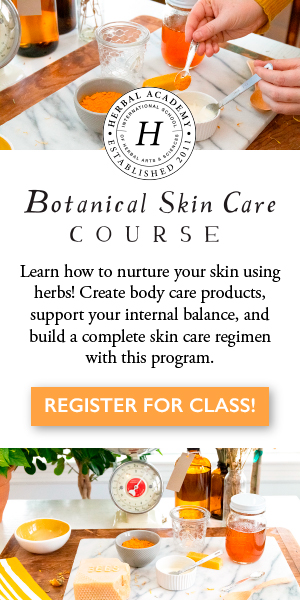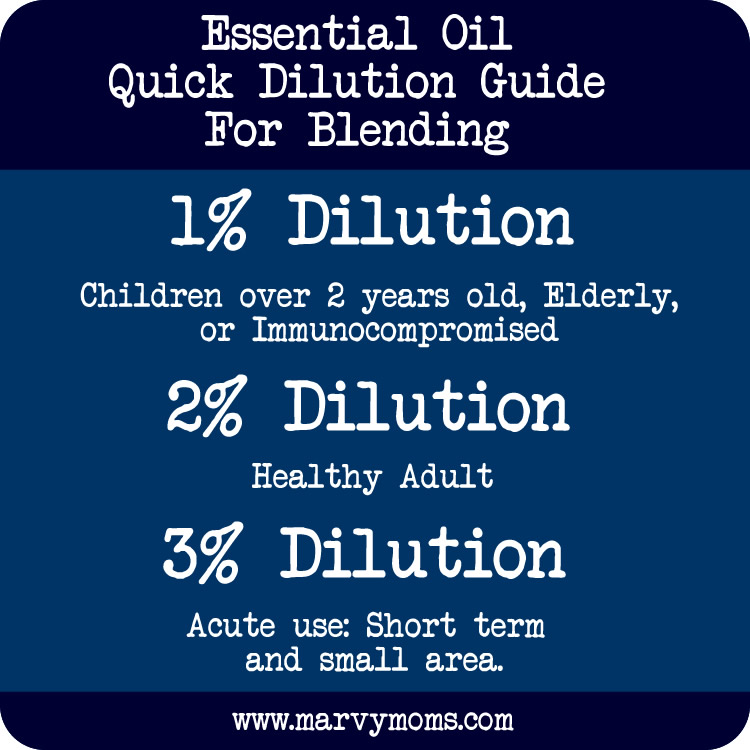
by Leslie Moldenauer | | Essential Oils
Learning how to blend (as a beginner) or formulate (more advanced) can be really fun. However, if you are not a mathematician, it can seem a little bit daunting.
Before You Begin!
There are some things to keep in mind before you begin, the first one is skin protection. Repeat exposure to neat oil is not a good thing, and can greatly increase your risk for sensitization. I recommend these nitrile gloves that you can pick up cheap. This is the very minimum in skin protection recommended, I think a long sleeve shirt is also be a good idea. If you are formulating large amounts of product I recommend a lab jacket and possibly even a hair net. Proper GMP is a must if you are a business owner.
Pipettes are another investment I would not do without. Have you ever tipped over your bottle to get out a couple drops and it pours out? Yeah, that has happened to me too…..but not since discovering pipettes years ago. These are one time use disposable pipettes to avoid contamination. Just squeeze the bulb, insert into the bottle orifice, and slowly tip bottle upside down while releasing squeeze on the pipette. No more overfilling, and you can easily squeeze the leftover back into the bottle.
Dilution Calculator
Once you have these basic supplies you are ready to start blending. My friend Emily Carpenter, Certified Aromatherapist over at Marvy Mom’s created this fantastic and extremely accurate dilution calculator. She has graciously offered for me to link to it here so that you can bookmark it for use. You will LOVE it!
Simple click the image below to get started!

Before you go, check out a couple of Emily’s other blog posts:
What’s In Your Bottle?
How To Choose An Essential Oil Brand
And a guest blog that I wrote for her- Is There Vitamin C in Orange Essential Oil?
Thanks for visiting, enjoy the dilution calculator!
Is there a SUPERIOR essential oil company?

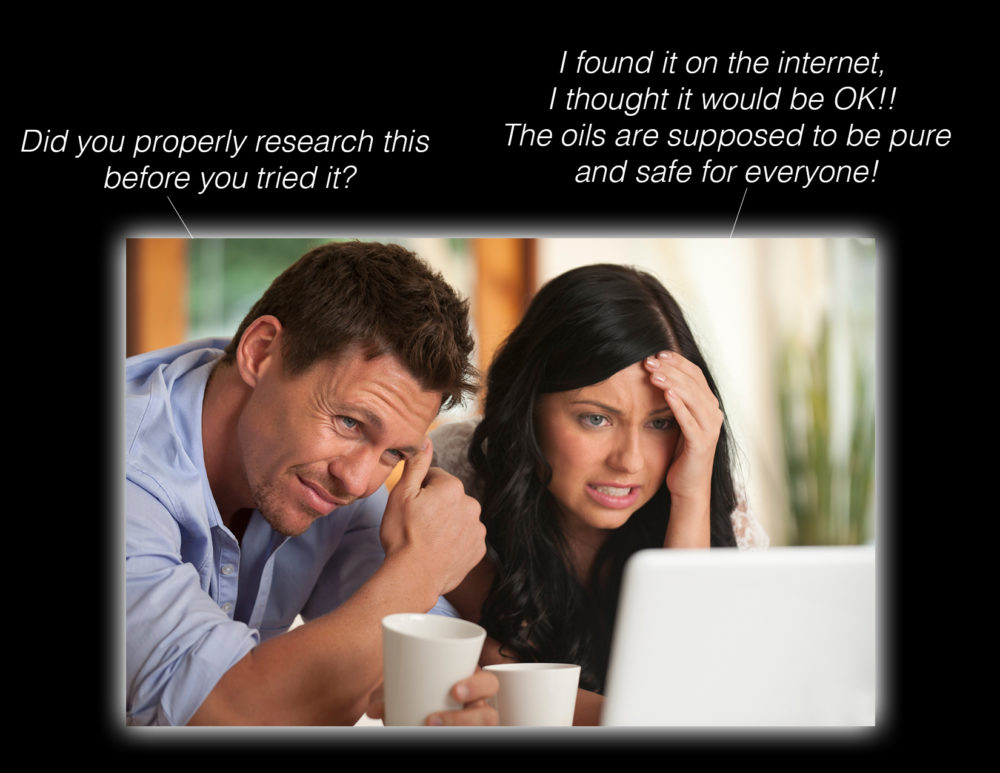
by Leslie Moldenauer | | Essential Oils
Dr. Google, why is it such an issue in the aromatherapy community? Dr. Google is a colloquial term used in the medical community. Dr. Google searches can result in both an incorrect diagnosis as well as a cure for what ails you, by listing a variety of possible diseases to match your symptoms. Dr. Google and aromatherapy has become so pervasive, that it is hard to imagine a life without this ability to seek out help for our health concerns.
Quality of Information
With so much information at our fingertips, it can be challenging to sort out what is trustworthy, what is personal opinion, and what is marketing material. Numerous blogs are written that make claims without substantive evidence. This can be a challenge for those with the best intentions looking for ways to help themselves and their family. Online articles about specific conditions are unable to take into account someone’s medical history, genetics, lifestyle factors, and social context when providing their opinion, all of which are important for a diagnosis, and the key to treating the whole person.
With the accessibility of information on the Internet, should we go to the doctor, whether it is an allopathic or complementary practitioner? When speaking to aromatherapy, people search the Internet, Facebook or Pinterest, asking for an oil or oil blend that will help their health concern. Many times, the method of application and safety is not covered, so in cases of someone searching for information with limited knowledge of the topic, it can be a precarious situation. The recommendations given online come from a place of wanting to help others, but many times, they miss the mark.
Here is a small sample of real-life situations that transpired through a Dr. Google search (all examples shared with permission):
- A woman who was currently under the care of a medical provider for a suspected collapsed vein performed a Google search looking for remedies for venous insufficiency. She found suggestions online to use wintergreen essential oil on her leg for relief. She had recently had a major surgery and was taking a variety of drugs including three blood pressure medications and one blood thinner (anticoagulant). She did not find a warning online about the use of wintergreen oil while on medication. She was grateful to have contacted a reflexologist/aromatherapist before attempting this at home, and found there could have been unwanted side effects.
Wintergreen essential oil is contraindicated (all routes) while taking anticoagulant medication, or after a major surgery. [1] Wintergreen has a great potential for interaction with Warfarin, a popular blood thinning medication. [2]
- A mother performed a Google search for essential oils that could help her child (5), with symptoms of her cystic fibrosis. Mom wanted to do all she could to help her daughter, and was told that essential oils could be of great benefit. Her search brought her to a large list of essential oil blends (a meme on Pinterest), which could address her daughter’s issues. The recommendations included but were not limited to: cinnamon bark, eucalyptus, peppermint, lemongrass, oregano and wintergreen. The recipes however did not give instructions, so she asked her neighbor, an aromatherapist in training, how to use the oils. Mom was grateful she did, as she learned that many of the recommended oils had contraindications for a child her age, as well as with her current medications.
Wintergreen oil is contraindicated for children, and all the other oils listed here have restricted uses for safety reasons. [3]
- Mom with heartburn and indigestion completed a Google search to see which oils could help her to find relief. She found a blog instructing her to take one drop of peppermint essential oil in her water every day. At first, she thought there was improvement but it quickly got much worse with pain, burning, and a new symptom of intense acid reflux whenever she lay down at night. She sought advice from a trained aromatherapist and discovered that ingestion of peppermint can increase the risk of GERD. She stopped immediately and the severe discomfort subsided.
Peppermint oil should be used with caution, with those suffering from gastroesophageal reflux disease (GERD), as it can exacerbate the condition if taken orally. This is because peppermint oil can relax the sphincter between the stomach and esophagus, allowing stomach acids to flow back into the esophagus. [4]
- An aromatherapist finds in a FB group a mom who was asking about treating her baby for a suspected staph infection with clove essential oil. Mom stated she searched online and saw that clove essential oil should be applied to the skin to remedy the infection. The aromatherapist reached out to her to try to explain the safety issues surrounding clove on the skin for a young baby. The outcome is unknown.
Clove should be used with caution in children under two years of age [5].
Clove is not the best choice here because it is considered a hot oil, and can increase the risk of skin irritation.
- A first time mom is having issues with her milk supply, and wants to be sure to support her growing baby the best that she can. She completes a Google search for oils to help increase her milk supply, and finds someone suggesting trying fennel essential oil. She begins using it faithfully every day but was not finding much benefit. She asks in a FB group what she can do to increase supply and mentions what she has already tried. She discovers that fennel is actually contraindicated during nursing and it is the herb that would provide the results she is looking for. She immediately switches to the herb, and was very grateful to find results quickly.
Fennel essential oil is contraindicated for all routes during breastfeeding based on the estragole content. [6]
More on fennel and nursing here
Be a Critical Thinker
The basics of aromatherapy can be researched well on the Internet. Looking up oils to help improve mood, or help with restful sleep for example, are some of the things a home user can find help with relatively easily. The more in depth topics, however, need more scientific, evidence-based research. The credibility of the source needs to be considered. Many popular health gurus have recently taken on the role of essential oil expert, without proper training. We should all be cautious with using unvetted health information, no matter the topic. Confirmation bias plays a big part in personal online research. This is a propensity to search for or interpret information in a way that confirms our preconceptions. Google, based on what is typed in its search queue, also gives results based on popularity. Question and verify what you have read with other sources. A good goal is to look for an additional 3-5 sources that back up the original information
What Type of Research Should You Look For?
Superior to a blanket Google search would be to utilize research databases for evidence-based information. Find quality research that has been validated.
Here is a sampling of databases to help you perform your research:
PubMed
Google Scholar
MedScape
Tea Tree Oil Database
PubMed Central-Open Access research
Trained aromatherapists are another great way to find quality information. I encourage you to ask what training they have received. A basic aromatherapy course includes 200+ hours of training, and a clinical level program is 400 hours of training. Aromatherapists are taught to analyze and critique current aromatherapy research and apply this knowledge to positively affect their client’s commitment to their well-being. Aromatherapists help to rebalance the body and restore wellness.
Many wonderful aromatherapists have dedicated their time and money to their field, and have a large personal investment in helping others. They focus on safety and the notion of “Above all to do no harm”.
Finding Balance
Aromatherapists at times struggle to find a balance between managing the misinformation that is seen on the Internet and operating their business. Many aromatherapists are present and active on social media sites in an effort to help the consumer practice aromatherapy safely. They are there to help those who ask, but there is a line to be drawn. This would be similar to calling your doctor for advice. That advice might cover the immediate concern, beyond that you would need to make an appointment to be seen, in order for the doctor to properly assess you and your concerns.
If you have specific concerns about yourself or your child, I encourage you to seek out an aromatherapy practitioner. A consultation will be specific to the client and should incorporate knowledge about contraindications, the chemistry of the oils, and synergistic’s of making essential oil formulations. Aromatherapists look at the whole person and work to restore homeostasis to the body, mind, and spirit.
As Madame Maury states:
“Each of us is a unique message. It is only the unique remedy that will suffice.”
In utilizing aromatherapy, nutrition, or any other complementary therapy, Google can be utilized as a reference point, one that needs further research. If you find an article, please research other sources to see if the information is up to date and accurate. The goal for all of us is the same, to make the best choices for ourselves and our family using trusted information, as well as to know when and where to look for assistance when needed.

References:
[2] Valussi, M. A short review of wintergreen/methyl salicylate toxicity. The International Journal of Professional Holistic Aromatherapy. Volume 4. Issue 3. (2015) p 43-49
[1] [3] [6] Tisserand, R., Young, R. (2014) Essential Oil Safety (2nd Ed) London: England. Churchill Livingstone Elsevier
[4] Peppermint. University of Maryland Medical Center.
BEFORE YOU GO! Remember to sign up for my FREE Facebook group! Hang out with me and THOUSANDS of other Essential Oil lovers looking to learn, click on to join Real Essential Oil Education Group!
Check out my FREE offer below!
Like so many practices in life I encourage you to become educated on the proper use of essential oils. When using them, please do so cautiously, understanding that there is often misinformation on the internet. You can be assured that I support only educated and proven resources. While essential oils should not be feared they should be respected and used properly to ensure the safety of the individuals using them.
Please note that I am not a medical practitioner. The content of this website is provided for general informational purposes only and is not intended as, nor should it be considered a substitute for, professional medical advice. Do not use the information on this website for diagnosing or treating any medical or health condition. If you have or suspect you have a medical problem, promptly contact your professional healthcare provider. By using this website, you assume full responsibility and liability for your own actions.
Essential Oils-Uncovering Fact From Fiction
Why I Refrain From Sharing Therapeutic Essential Oil Blends
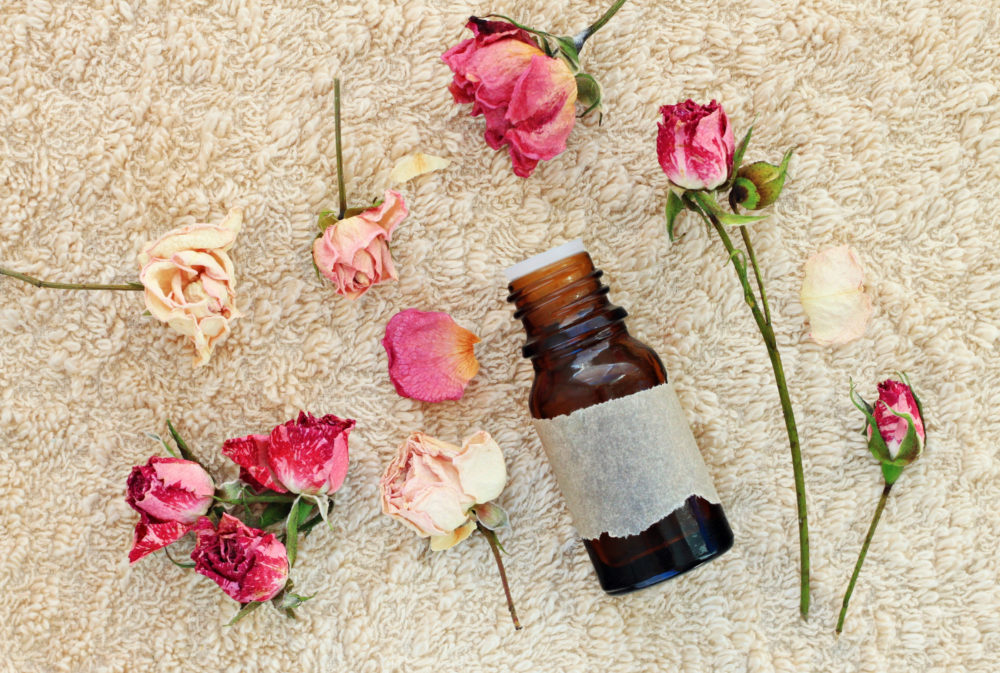
by Leslie Moldenauer | | Essential Oils
Aromatherapy, not “always or ever”, not “black and white”. What do I mean by that? A quick visit to social media can leave a home user dizzy with information, much of it is erroneous; hearing statements like never use on babies, never take internally, and always dilute are commonplace.
I understand that some professionals are making attempts to keep the home user safe, as well as keeping children from being exposed to neat oils at a very early age among other things. Let me assure you, I share that concern, as they are valid. However, the fear that is being instilled in statements like “Oh my, you should never do that”, is not helping anyone.
To be fair, it can be a difficult task to find quality, reliable information on the Internet surrounding the art and use of aromatherapy. I have taken to speaking about safety often for this very reason. I have extended knowledge in my field, and to some, my education may not have even scratched the surface.
There is one that I am sure of, that the professionals in the field of aromatherapy have a few things in common:
- We want to help you. We decided to go into the field of aromatherapy as we are healers in our own right. This is our passion, and our mission statements may vary, but have one common thread: “First do no harm”.
- Learning is ongoing. We do not have all the answers but are always seeking them. We all want to be experts in our craft.
- We all believe in the magic and powers of essential oils, and have seen firsthand how they can help in a variety of situations.
Now our approach may not all be the same. And even more importantly, our education is not all the same: different institutions, different amount of hours, a different focus or niche among other things. This can be problematic. Therefore, it is important for you, the end user, to do your own research. At the very least ask the aromatherapist what their credentials are, and ask for resources to back up what they are telling you. When my clients ask for these things, I am more than happy to oblige. I would expect you to do the same thing if it were a pediatrician or psychologist. Every single one of us in every aspect of our lives is “practicing”, whether we are a professional, a parent, or a friend. A good rule of thumb is utilizing what works and discarding what doesn’t.
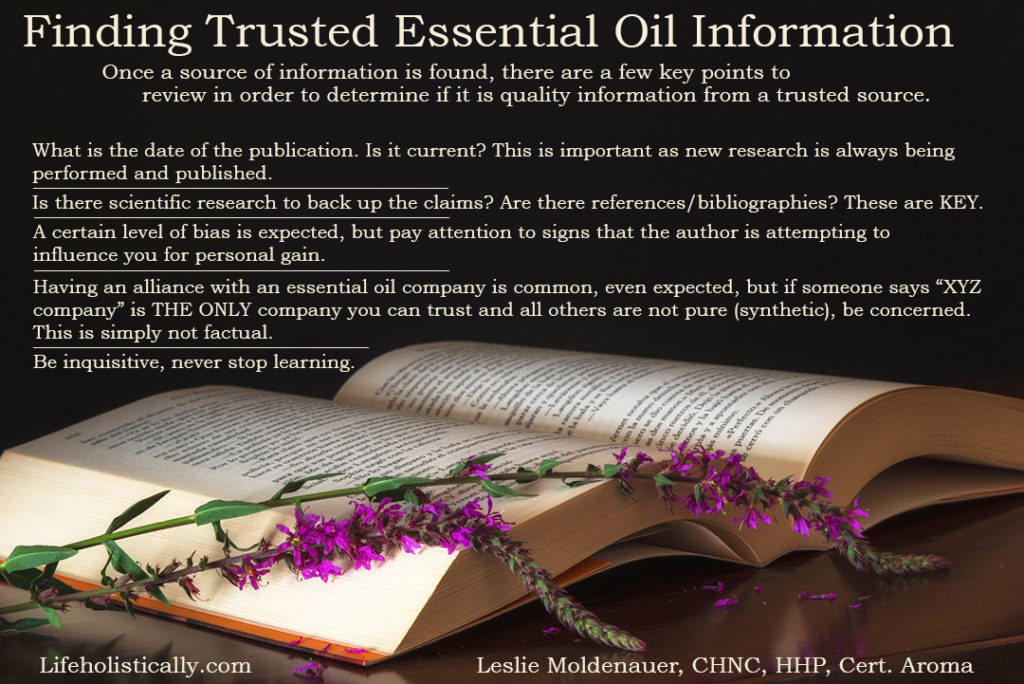
Never Examples
My first example of a “never” statement is telling others to NEVER take oils internally. This is not helping anyone. What should be discussed is how to do so safely and when does it make sense to do so. For the record, it is not in water, or neat under your tongue. Follow this link for more.
Another example is NEVER using essential oils on babies. This is not looking at the big picture. Some will tell you no oils before two years of age, some say no oils before five years of age, some say no oils before 10. Based on scientific research (key term here) this is what we do know:
**Oils should typically be avoided topically for infants and small babies under a few months of age. The reason for this is their integumentary system (skin) does not mature until then and using oils topically (even when diluted) can increase the risk for adverse reactions and set them up for possible sensitization.
**There is a pretty extensive list of oils that should not be used “dermally” under two years of age. This does not imply the statement above of “no oils under two”.
(Please reference Robert Tisserand’s Essential Oil Safety 2e for the details)
**Babies and children ARE much less equipped to handle certain essential oils topically, due to immature livers and detoxification systems. Less is more, the gentle way first utilizing herbs and hydrosols, are things that I agree with. This is the reason why many recommend speaking to a professional. It should not be to induce fear, but to empower you to know the right way, period.
**Last example in regards to children: NEVER use eucalyptus essential oil under the age of 10. This is a fear based statement and not all that accurate, BUT there are precautions to know about and be cognizant of. According to Robert Tisserand, this oil (high in 1,8 cineole) should be kept away from the face for children under 10 years of age, especially for those children that are susceptible to issues such as seizures or have other CNS weaknesses. This does not mean NEVER, it means you need to know what you are doing (Source)
Always Example
ALWAYS dilute. On social media, this may be the best way to keep the general population safe as SO MANY are recommending neat use. It is not an always statement. All aromatherapy professionals know that there can be a time and place for undiluted oils. A better statement would be: It is very important to know when and where to apply oils undiluted and to know which oils carry a high risk of irritation/sensitization. If you do not know how to safely navigate this for yourself, you are better off diluting everything you apply topically. This is especially the case for children. Please do not take this kind of advice from someone that is not educated. Sensitization is real, it does happen, and it is ugly.
In Conclusion
Aromatherapy is simply not black and white, and nothing is always or never. Safety should always be the first consideration, and everyone has his or her different way of handling it. If you can do one important thing here for yourself, it is to do your due diligence and find out the facts, with CREDIBLE resources. While essential oils should not be feared they should be respected, researched, and used properly to ensure the safety of the individuals using them.
Like so many practices in life I encourage you to become educated on the proper use of essential oils. When using them, please do so cautiously, understanding that there is often misinformation on the Internet. You can be assured that I support only educated and proven resources. While essential oils should not be feared they should be respected and used properly to ensure the safety of the individuals using them. Please note that I am not a medical practitioner. The content of the website is provided for general informational purposes only and is not intended as, nor should is be considered a substitute for, professional medical advice. Do not use the information on this website for diagnosing or treating any medical health condition. If you have, or suspect you have a medical problem, promptly contact your professional healthcare provider. By using this website, you assume full responsibility and liability for your own actions.
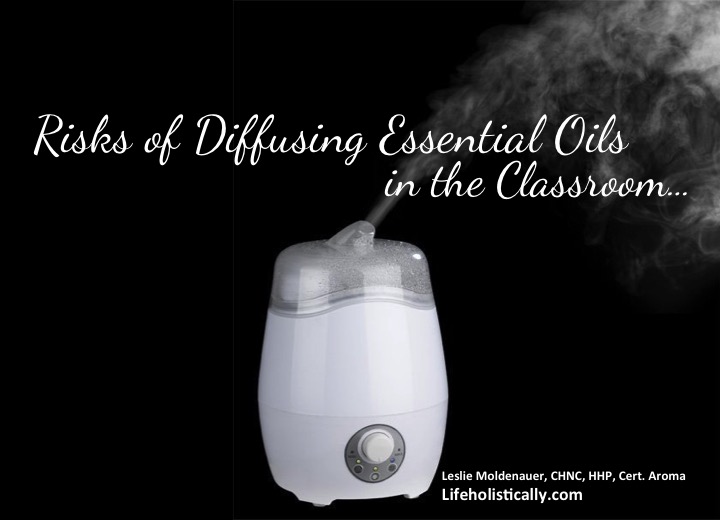
by Leslie Moldenauer | | Essential Oils
The risks of diffusing essential oils in the classroom. If we take into consideration the number of germs that are passed back and forth at school, it is not a surprise that some teachers have considered diffusing essential oils in the classroom. For those with minimal education, this may seem like a great solution to keeping sickness at bay and to keep attendance up, but it comes with a significant amount of risk. Many are told that essential oils are completely natural and safe for everyone, but this is not always the case. There are many things that need to be considered when diffusing in a classroom full of children with a variety of different health constitutions. The liability in this type of situation needs to be looked at closely.
First things first, I know many teachers personally and have had the pleasure of having some wonderful teachers for my two boys over the years. I can say without a doubt, that they hold your child’s well-being very close to their heart. They would not want to do anything to harm a child.
I hope to clear up the variety of possible issues of the practice of diffusing in the classroom so that parents, teachers, and faculty can understand the safety issues and the risks. I hope to assist them and you so that everyone can make informed decisions for the well being of our children.
Essential Oil Home Use
Essential oils are a beautiful complementary modality. They come from plants but even though they have the potential to assist the body in doing what it does best, they do not come without risk. The home user can utilize essential oils after a little bit of research. The “basics” of aromatherapy can be researched on the Internet. The more in-depth topics, however, need more scientific, evidence-based research.
When looking on the Internet for research, many times the method of application and safety is not covered, so in cases of someone searching for information with limited knowledge of the topic, it can be a precarious situation. The recommendations given online come from a place of wanting to help others, but many times, they miss the mark.
Essential Oil Classroom Use-The Risks
One of the many reasons for more scientific research of essential oils is they do not come without risk, especially for children. A classroom has an average of 20 children. Some of which may be immune-compromised, taking numerous medications, have allergies, chemical sensitivities, respiratory issues such as asthma, an increased risk of seizures, autoimmune diseases and more. A teacher could not possibly know how one seemingly innocuous essential oil could react among those 20 children. The reactions for just one child could change from day to day as well. Aromatherapists know when working with clients what works for one person may not work for another. It may be offensive or have the completely opposite reaction/effect.
Asthma
There are numerous oils that should not be used with children who have asthma. Asthma and essential oils are very tricky. The triggers for one person are completely different to the next. Even seasoned aromatherapists recommend extreme caution when trying essential oils for clients with asthma. I myself, insist that an asthma sufferer have their inhaler handy when trying a particular oil or oil blend for the first time as well as the 3rd, 10th, and 50th time. Asthma can be a life-threatening situation, and many oils, as well as other aromas in the environment, can trigger it.
ADD, ADHD, Autism
Another health situation that needs great consideration is ADD, ADHD, and autism. A great example here is the essential oil of Lavender Lavandula angustifolia. It is a known phenomenon by aromatherapists that many with ADHD have a manic type reaction to lavender rather than what should be a sedating one. Here is an informative article that was written by educator Sylla Sheppard-Hanger of the Atlantic Institute of Aromatherapy that covers the topic in more detail.
Chemical Sensitivities
Chemical sensitivities are becoming more and more common in society. The initial cause is not fully understood, but various chemicals in the environment can be a trigger it. Many chemical components in essential oils are also found in the environment. Let’s look at Limonene as an example. Limonene is found in many of the citrus essential oils and is also found in the environment in degreaser, Goo-Gone, wood finisher, and other items that can be found in the household. Many foods contain minimal amounts of essential oil constituents. Some may be surprised to know that cinnamaldehyde found in cinnamon and cassia oils (think popular anti-germ blends) is found not only in household cleaning products and candles, but is also in cinnamon bread, cereals, cookies, puddings, applesauce, and fruit juices in the supermarket (1).
Essential oil constituents cross over into common household products, home goods, and foods in many more instances than these. For those that have chemical sensitivities, the day to day can be very challenging. Some of the possible symptoms of chemical sensitivity are headaches, nausea, dizziness, rashes, respiratory difficulty (including asthmatic episodes), and cognitive dysfunction (2). The more immune-compromised a person is, the more likely they are to have these sensitivities.
Unfortunately, there are many other chemicals in the classroom that can be an issue as well. Limiting exposure to the toxic chemicals of conventional household cleaning products can be done. Using essential oils for cleaning hard surfaces is a great idea, ONLY in the evening after the children have gone home for the day. Here is a great resource for you from the Aromatic Wisdom Institute, to help you to clean with essential oils safely.
Seizures
There are a few oils that are not recommended around children (or adults) that have a seizure disorder or a predisposition to them. Essential oils with high amounts of camphor are a known issue, those include but are not limited to: Ho leaf CT camphor, Spanish lavender, wormwood, sage, basil, spike lavender, rosemary CT camphor (camphor is not the only constituent that has the potential to precipitate a seizure). Various species of eucalyptus, although not common, has the potential to precipitate a seizure when used near the face of a child under 10 years of age (3).
These situations are rare but have happened in children, so it is important to understand the risk.
Liability
Now that I have covered a few of the various health issues that could make diffusing essential oils in the classroom risky, let’s briefly cover the liability of doing so. Parental consent for every child is a must. Those parents must be told which oils will be diffused, and what those risks are for certain children. (As you can see by what I covered above that is not going to be easy). Essentially, school boards must be the ones to come up with guidelines and policies for such a practice.
If parental consent is not obtained before classroom diffusing and something happens to a child, the liability is great for the teacher and the school district. Sadly, there are some instances, (speaking from experience) where the principal of a school may not even be aware of the practices of the teacher. In this particular instance, the teacher thought that she was doing something that would benefit the children. The school district already had a rule in place stating there are no diffusing essential oils in the room with children present so it was handled quickly.
Diffusing Times
Even though we now know that diffusing in the classroom is not the best practice for everyone’s safety, I want to briefly cover safe diffusing. Robert Tisserand states that 30-60 minutes of diffusion followed by a 60-minute break is best (4). (I typically recommend half this amount of time for a child). Extended diffusing can overwhelm the senses.
In order to explain the possible reasons for this, let’s talk a little bit about our sense of smell, or our olfactory system. According to Dorene Petersen of ACHS, “Our sense of smell goes through five stages, those are: detect, transmit, perceive, analyze, and store. These stages cycle incredibly fast. The reception area of our olfactory system is called the olfactory epithelium. The olfactory epithelium is the size of a small postage stamp in each nostril and is packed with an impressive 40 million sensory neurons, capable of detecting .0000000013 of an ounce of a scent in a single breath of air” (5). Our olfactory system is incredibly efficient, obtaining the therapeutic benefits of these amazing oils happens quickly. To receive maximum benefit and not waste your precious oils, follow the diffusing times recommended above.
Another important myth to dispel is that diffusing essential oils rids the air of the VOC’s present. This is not factual. The most effective methods in counteracting VOC’s in the home is a high-quality air filter, houseplants, and making sure you allow the fresh air in as much as possible.
A Possible Alternative
A personal inhaler is an option for a child to take to school (with permission). They can be helpful for a variety of reasons such as allergies, stuffy nose, or to help with anxiety or improve focus. The personal inhaler’s scent is limited to the user, meaning no other children become exposed to the scent or the vapor. As long as the parent is sure of the safety of their child and they understand they are not to share it, the risk is removed for the teacher, faculty, or the other children in the room.
In Conclusion
As you can see, essential oil use must be evaluated for each individual, circumstance, and the environment. These are general guidelines that do not mean definitive results in all cases. This article was not written to instill fear, but to respect their uses and limitations.

References:
(1) Cinnamaldehyde content in foods determined by gas chromatography-mass spectrometry
(2) Multiple Chemical Sensitivity. Retrieved from
http://www.webmd.com/allergies/multiple-chemical-sensitivity#1
(3) (4) Tisserand, R., Young, R. (2014) Essential Oil Safety (2nd Ed)
(5) Petersen, D. (2012) Aroma 101
Resources from above and more!
Extreme Chemical Sensitivity Makes Sufferers Allergic to Life
Green Cleaning with Essential Oils
Lavender: It’s not always calming
Personal Inhaler
Like so many practices in life I encourage you to become educated on the proper use of essential oils. When using them, please do so cautiously, understanding that there is often misinformation on the Internet. You can be assured that I support only educated and proven resources. While essential oils should not be feared they should be respected and used properly to ensure the safety of the individuals using them. Please note that I am not a medical practitioner. The content of the website is provided for general informational purposes only and is not intended as, nor should is be considered a substitute for, professional medical advice. Do not use the information on this website for diagnosing or treating any medical health condition. If you have, or suspect you have a medical problem, promptly contact your professional healthcare provider. By using this website, you assume full responsibility and liability for your own actions.
BEFORE YOU GO! Remember to sign up for my FREE Facebook group! Hang out with me and THOUSANDS of other Essential Oil lovers looking to learn, click on to join Real Essential Oil Education Group!
Check out my FREE offer below!
Essential Oils-Uncovering Fact From Fiction
Safety surrounding diffusing essential oils
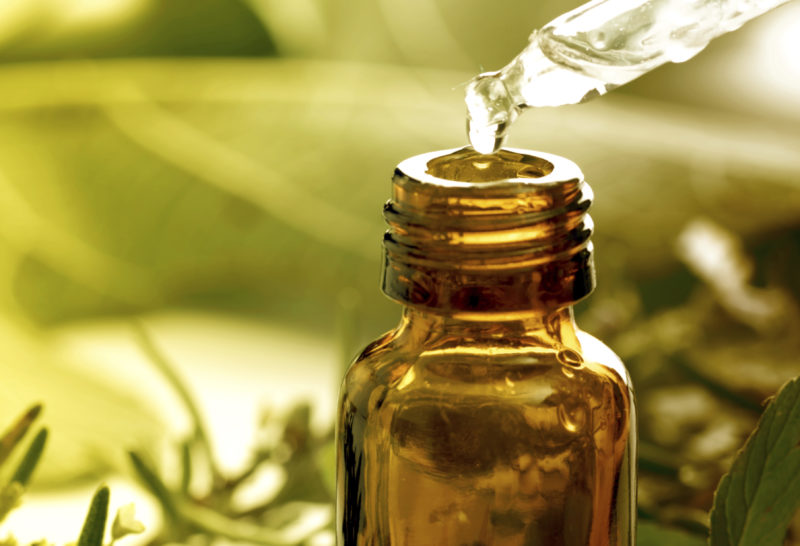
by Leslie Moldenauer | | Essential Oils
Aromatherapy is a gift for us all. All aromatherapists should look at you as the whole, unique, beautiful person that you are, not a set of symptoms. Homeostasis is the goal, finding balance, tapping into the body’s own innate healing ability. Herein lies the magic. –Leslie Moldenauer, CHNC, HHP, Cert. Aroma, Dipl. Aromatic Medicine
What in an essential oil?
Essential oils originate from many parts of a plant (Bark, flowers, leaves, roots, and stems), and are extracted through either steam-distillation, cold-pressing, or co2 extraction. Essential oils are the true essence of the plant and are highly concentrated extracts. The chemical composition and scent of these aromatics provide us with strong psychological and physical therapeutic benefit. Most of these benefits are seen through direct inhalation or applying diluted to the skin.
Essential oil Dilution
Essential oils very concentrated, many times over than the plant that it is derived from. Since they are so concentrated, they need to be diluted to avoid irritation for children and adults.
When using oils undiluted or what some call “neat” there are risks involved:
-The first risk is skin irritation, which is a direct result of contact with the skin and is localized to where the oil was applied. Once the material is removed, healing occurs. Removal is best done with a carrier oil such as almond, jojoba, or milk. Healing may not occur immediately, but you should see improvement after proper removal.
-The second, more serious reaction is a systemic (Affecting the entire body or organism) response involving the immune system called sensitization. According to Dorene Petersen of ACHS, “Sensitization occurs once the offending substance has penetrated the skin, been picked up by proteins in the skin, and mediated by the IgE response that produces histamine and other irritants” [1]. This is an allergic reaction that begins at the site of application but quickly spreads to the whole body. If the immune system response is activated, you likely will not be able to use the oil, or constituent in the oil again (the constituent can occur in multiple oils). If this happens to you please seek medical attention immediately. Please remember to always dilute before applying to the skin for your safety.
The Aromatic Wisdom Institute speaks in more detail about the topic of sensitization here [2].
Essential Oil Use and Children
Children are much more sensitive to essential oils and aromas in general, but when used with care they can still benefit from their therapeutic uses. There are a number of things that parents should know before using them to ensure the safety of their child.
Overall the immune system of a child is much more immature than that of an adult, therefore extra precautions need to be put in place. Newborn babies have an immature nervous system (blood/brain barrier), and liver. Therefore, avoiding the use of essential oils for a newborn (under 3 months) both via topical application and inhalation is probably best. In regards to the topical use of essential oils, many are not recommended dermally under two years of age per Robert Tisserand [3].
*For more information on what oils to avoid topically under two, please refer to Robert Tisserand’s latest book, Essential Oil Safety 2e.
My recommendation is, to begin with gentler remedies such as hydrosols (floral waters), homeopathy, and herbs for little children. These alone can be very beneficial. Reserve oil use for after trying these things first.
Essential Oil Diffusion
A great way to obtain the benefits of essential oils without the risk of skin irritation that topical use brings is by inhalation. There are a variety of methods of inhalation such as an aromastick, steam bowl, or even a drop on a cotton ball or tissue.
Essential oil diffusers disperse essential oil into the air in tiny droplets. There are a variety of diffuser available on the market. Here are a few that I own that you may want to take a look at:
Diffuser #1
Diffuser #2
Diffuser #3
(affiliate links)
I would recommend diffusing for periods of no longer than an hour without taking a break. In order to explain possible reasons for this, let’s talk a little bit about our sense of smell, or our olfactory system.
“Our sense of smell goes through five stages, those are: detect, transmit, perceive, analyze, and store. These stages cycle incredibly fast. The reception area of our olfactory system is called the olfactory epithelium. The olfactory epithelium is the size of a small postage stamp in each nostril and is packed with an impressive 40 million sensory neurons, capable of detecting .0000000013 of an ounce of a scent in a single breath of air” [4]. Our olfactory system is incredibly efficient, obtaining the therapeutic benefits of these amazing oils happens quickly. To receive maximum benefit and not waste your precious oils, follow the diffusing times recommended above.
Essential Oils and Pregnancy
Pregnancy is a delicate time, especially during the first trimester, and as we know that chemical constituents in essential oils pass the placenta, even though in minute amounts [5], safety is a genuine concern.
According to International Federation of Professional Aromatherapists (IFPA):
“Essential oils by their very nature, being organic substances, will cross the placental barrier and have the potential to affect the fetus. However, the amount of essential oil that actually accesses the mother’s skin is very tiny and therefore the amount that reaches the placenta is minuscule if proper dilutions are being used. Small amounts of essential oils can be beneficial to the baby and there are no recorded instances of harm being caused to the child through essential oils used in aromatherapy massage” (IFPA, 2013).
Aromatherapy, however, is rarely if ever black and white. It is not a NEVER or ALWAYS modality. Essential oils can be beneficial for pregnancy, labor, delivery, and postpartum. The key is knowing which oils to use, and how to use them.
If you are pregnant and are taking medications or have a medical condition, even more research needs to be done before using essential oils, as your list of “do not use” may be more detailed. Please seek out an aromatherapist for assistance.
If you are considered high risk due to multiple losses, it is advisable to restrict essential oil use during the first trimester. According to Robert Tisserand, due to the overall big picture of reproductive toxicity, topical application of essential oils while pregnant during any given day should not exceed a range of 1-4% [6].
Essential Oils and Phototoxicity
There are essential oils that cause phototoxicity or photosensitivity. This can occur when certain essential oil constituents on the skin react when exposed to the sun (ultraviolet light). This can result in general redness and burning of the skin, permanent changes in melanin, and chemical burns. These oils can be used on the skin, but utilize caution by not going out into the sun for 12-24 hours after exposure. This applies to the area of skin where the oil was applied, not your body as a whole.
Here is a list of oils that should be used topically with caution, and their maximum use levels according to IFRA standards [7]:
Angelica Root Angelica archangelica 0.8%
Bergamot Citrus bergamia 0.4%
Bitter Orange (Cold/Expeller Pressed) Citrus aurantium 1.25%
Cumin Cuminum cyminum 0.4%
Grapefruit (expressed) Citrus paradisi 4.0%
Lemon (Cold/Expeller Pressed) Citrus limon 2.0%
Lime (Cold/Expeller Pressed) Citrus aurantifolia 0.7%
Mandarin Leaf Citrus reticulate 0.17%
Rue Ruta graveolens 0.15%
Taget Tagetes minuta 0.01%
Always use extreme caution when using any of these oils topically. It can be assumed that if someone is taking moderate amounts of a phototoxic oil internally that a phototoxic reaction can occur. If you use any of these oils, utilize caution.
In conclusion
Essential oils are potent; it is crucial that you keep them out of reach of children. I have seen pictures online of small babies or small children handling bottles of oil. It is not cute, nor safe to let them hold them. Your children should know from a very young age that essential oils are medicine, and not for their little hands.
Essential oils are a beautiful modality and I am grateful to have access to them. When you follow proper safety guidelines, you can utilize essential oils and know that you are doing the best for yourself and your family.
References
[1] [4] American College of Healthcare Sciences (2012) Aroma 101
[2] Essential Oil Sensitization. Retrieved from
Would You Know If You Had an Essential Oil “Sensitization” Reaction?
[3] [5] [6] Tisserand, R., Young, R. (2014) Essential Oil Safety (2nd Ed)
[7] IFRA standards. Retrieved from http://www.ifraorg.org/en-us/standards-library/s/phototoxicity#.V9VaSpMrJn4


BEFORE YOU GO! Remember to sign up for my FREE Facebook group! Hang out with me and THOUSANDS of other Essential Oil lovers looking to learn, click on to join Real Essential Oil Education Group!
Check out my FREE offer below!
Like so many practices in life, I encourage you to become educated on the proper use of essential oils. When using them, please do so cautiously, understanding that there is often misinformation on the internet. You can be assured that I support only educated and proven resources. While essential oils should not be feared they should be respected and used properly to ensure the safety of the individuals using them.
Please note that I am not a medical practitioner. The content of this website is provided for general informational purposes only and is not intended as, nor should it be considered a substitute for, professional medical advice. Do not use the information on this website for diagnosing or treating any medical or health condition. If you have or suspect you have a medical problem, promptly contact your professional healthcare provider. By using this website, you assume full responsibility and liability for your own actions.











